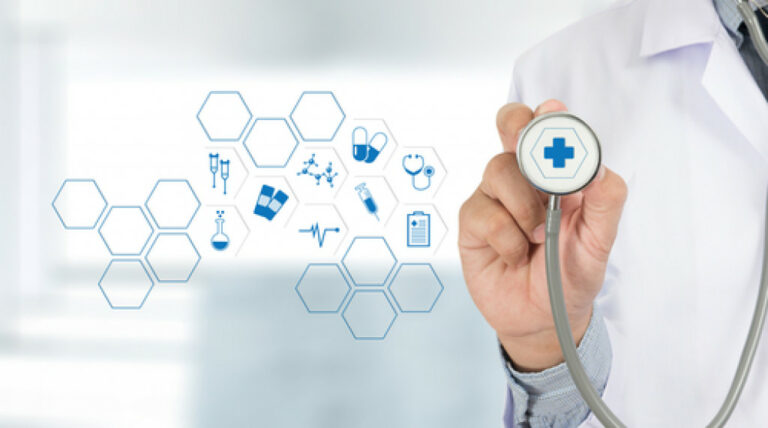• Technology is revolutionizing the way healthcare facilities are managed.
• Automated medical records systems allow healthcare organizations to quickly store and manage patient information.
• Analytics and dashboards provide insights into the operational performance of hospitals.
• AI-powered automation tools help reduce costs associated with manual labor.
• Robotic process automation (RPA) and integrated systems provide healthcare organizations with greater flexibility in managing their resources.
Healthcare facilities are complex systems requiring efficient and effective management. Managing hospitals and clinics require specialized tools, techniques, and personnel, from patient admission to tracking treatments. Fortunately, technology is revolutionizing how healthcare facilities are managed. Here are some examples.
1. Medical Asset Management
Healthcare facilities require a wide range of expensive medical equipment to be managed and maintained. Technology can help track the location and maintenance of these assets with greater accuracy than ever before. Here are some recently developed strategies:
GPS Trackers
GPS trackers can be installed into medical equipment such as medical carts or defibrillators. These trackers allow medical personnel to quickly locate and retrieve medical equipment when needed. This type of medical device tracking also reduces theft and misplacement of expensive equipment.
Surveillance Systems
Security surveillance systems are now commonplace in healthcare facilities. Advanced systems can be used to monitor suspicious activity or even sound alerts when potentially dangerous activities occur. Surveillance cameras also provide evidence if medical negligence occurs and allow medical staff to review footage should an incident require resolution.
Robotic Maintenance
Robotics has become an important tool in the healthcare industry. For example, robotic maintenance systems can complete routine cleaning tasks more efficiently than ever before. These systems are also able to detect defects, such as loose screws or broken parts, that could cause medical device malfunctions.
Inventory Management
It’s vital that healthcare facilities have accurate and up-to-date inventories of medical supplies and equipment. Technology such as radio frequency identification (RFID) tags can help track items in real-time, allowing for more efficient utilization of resources. RFID tags also make detecting expired or faulty items easier, ensuring that only the highest quality supplies and equipment are used.

2. Medical Records Automation
Adopting innovative medical records automation systems allows healthcare organizations to efficiently store and manage patient information. Patient records can be quickly accessed with a simple search query or by scanning a patient’s identification card.
This data can inform decisions about treatments or follow-up visits and help the facility track appointment schedules, staff shifts, and other resources more effectively. Moreover, automated medical records systems help ensure that all necessary information is easily accessible for updated for compliance purposes.
To make the most out of this technology, healthcare facilities must be willing to invest in advanced systems. The cost of these tools may seem high at first, but the long-term benefits are undeniable.
3. Advanced Analytics and Dashboards
Healthcare facilities need up-to-date analytics tools to track patient flow, staff performance, resource utilization, and other vital metrics. Advanced analytics allow healthcare providers to quickly identify problems and discover opportunities for improvement while providing valuable insights into the organization’s operations overall.
Dashboards provide an overview of key data points at a glance while allowing users to drill down into specific areas of interest with ease. For instance, dashboards can be used to track patient wait times, staff performance, and hospital occupancy rates for greater efficiency.
Moreover, these systems can help healthcare providers plan for future growth, anticipate needs, and allocate resources accordingly. Hospitals may be able to better forecast patient trends based on past data, resulting in more efficient scheduling and improved outcomes.

4. AI-Powered Automation Tools
Artificial intelligence (AI) has transformed many aspects of healthcare management over the past few years—particularly those related to medical diagnosis and treatment plans—but it can also be used to automate day-to-day functions in hospitals or clinics, such as scheduling appointments or tracking inventory levels.
AI-powered automation tools allow for faster decision-making in rapidly changing environments like healthcare facilities without sacrificing accuracy or precision.
In addition, AI automation can help reduce costs associated with manual labor for tasks like data entry or documentation creation/updates.
5. Robotic Process Automation (RPA)
Robotic process automation (RPA) is an emerging technology that uses robots or “bots” to automate various processes within a business system—such as employee onboarding or billing processes—by capturing data from digital sources such as emails or websites in order to streamline workflows across multiple departments within an organization.
RPA provides healthcare organizations with greater flexibility in managing their resources while reducing manual labor costs associated with traditional methods of workflow management.
In addition, RPA helps reduce errors caused by human oversight by ensuring that all processes are completed accurately every time without fail.
6. Integrated Systems
Integrated systems allow multiple applications within a single platform so that data from one system can be shared across multiple departments within the same organization without any manual intervention required from IT staff members or administrators.
This streamlines communication between departments while facilitating collaboration between teams on projects where information needs to be shared among multiple stakeholders quickly and accurately—making it easier for healthcare organizations to manage their resources more efficiently while improving overall service quality levels at the same time.
Furthermore, integrated systems allow for tighter security controls that help protect patient information and other confidential data from unauthorized access.
Technology has revolutionized how healthcare facilities are managed today by providing tools that enable faster decision-making while reducing manual labor costs associated with traditional methods of workflow management. From automated medical records systems to integrated platforms that facilitate collaboration between teams on projects where information needs to be shared among stakeholders quickly and accurately, adopting these technologies can help healthcare organizations gain greater insight into their operations while improving operational efficiency levels at the same time.




